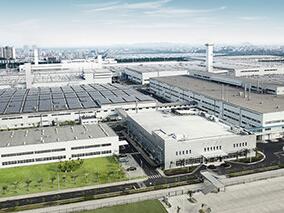There are obvious differences between homopolymers and copolymers of PP polypropylene, mainly in the following aspects: Molecular structure and composition: Homopolymer polypropylene (PPH or PP-H) is made by the polymerisation of a single propylene monomer, with no ethylene monomer in the molecular chain, resulting in a high degree of regularity of the molecular chain and a high degree of crystallinity of the material. Copolymer polypropylene (PPC), on the other hand, is a copolymer of propylene monomer and ethylene monomer. According to the distribution of ethylene monomer in the molecular chain, it can be divided into two kinds of random copolymer (PPR) and block copolymer (PPB). Random copolymer (PP-R) is obtained by copolymerisation of propylene monomer and a small amount of ethylene monomer under heating, pressure and catalyst, and the ethylene monomer is distributed randomly and randomly into the long chain of propylene. Performance Characteristics: Homopolymer polypropylene (PPH) has good rigidity, but poor impact resistance, especially poor low-temperature impact resistance, and poor creep resistance. In order to improve its brittle problem, some raw material suppliers use polyethylene and ethylene-propylene rubber blend modification method to improve the toughness of the material, but this method can not essentially solve the long-term thermal stability of PP-H performance. Random copolymer polypropylene (PPR) has better impact resistance and creep resistance. And block copolymer (PPB) has good impact resistance, but poor creep resistance. Areas of application: Due to its good rigidity, homopolymer polypropylene is commonly used in applications requiring high stiffness and rigidity, such as extruded blowing grades, flat yarn grades, injection moulding grades, fibre grades, blown film grades etc. Copolymer polypropylene, on the other hand, is more common in applications requiring these properties, such as film grades, injection moulding grades, et

Foralongtime,duetounsoundlaws,regulationsandpolicies,therecycledplasticsindustry,whetherinChinaorinothercountriesandregionsaroundtheworld,whetherbythe

...

OnJune8,2023,theconcludingmeetingofthe"Sino-NorwegianCooperation-CapacityBuildingonMarineWastePlasticsandMicroplasticsManagement"project(hereinafterre

...